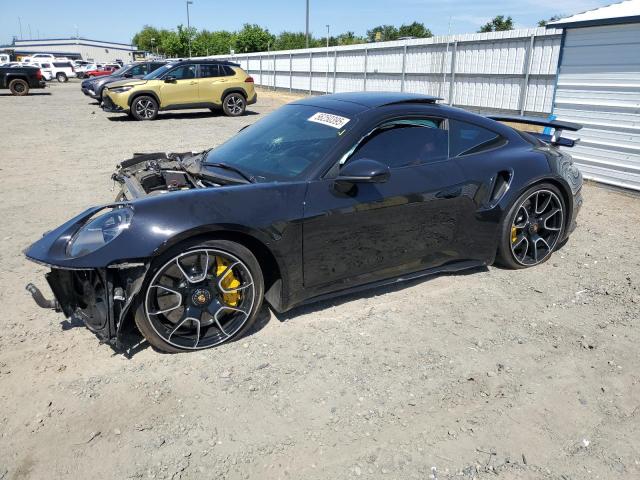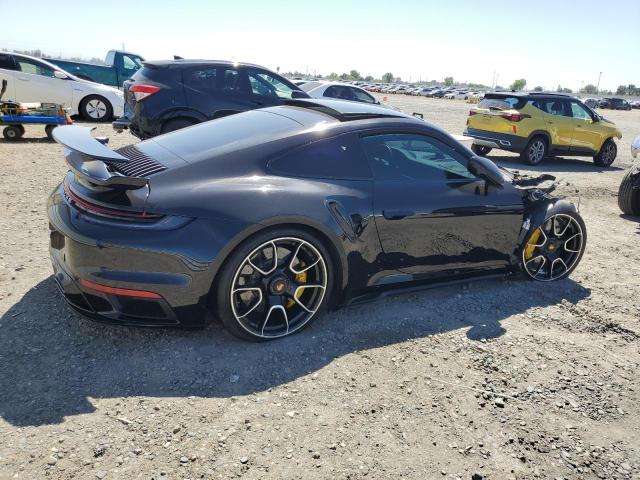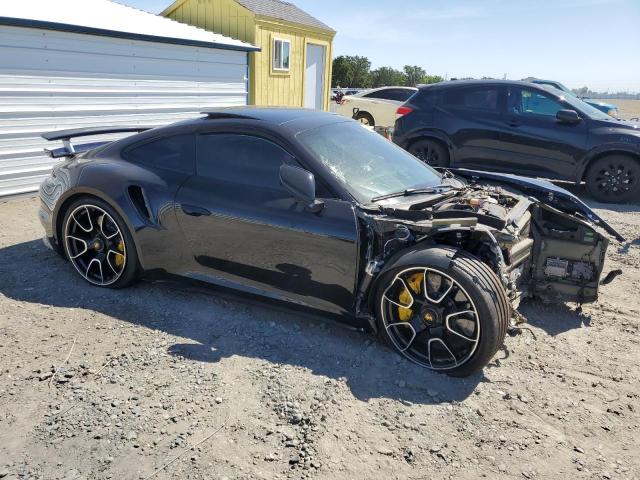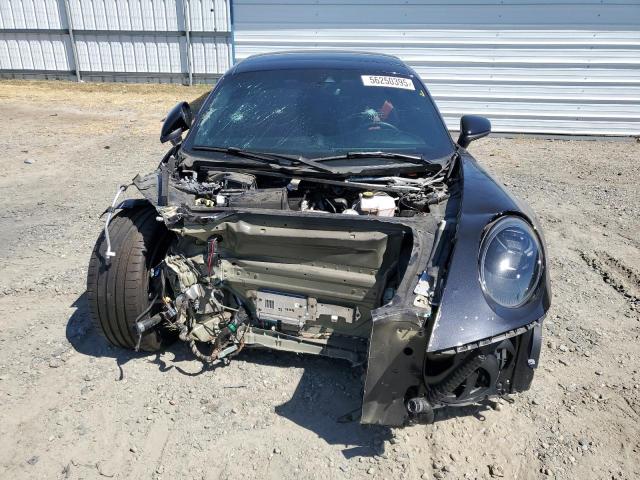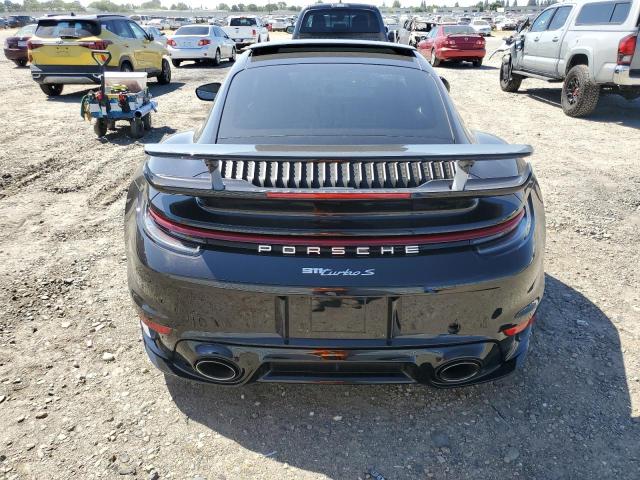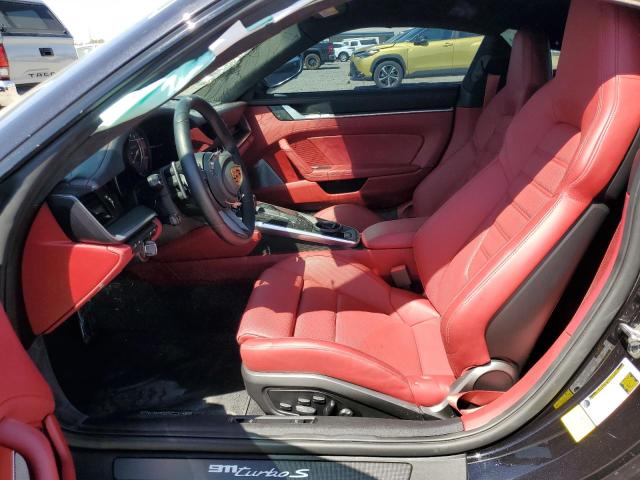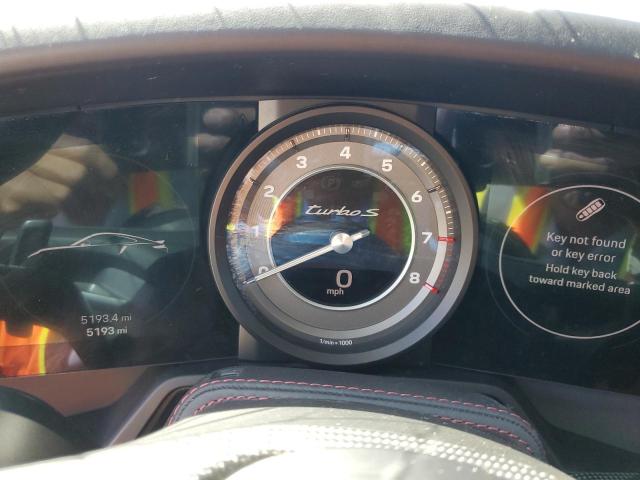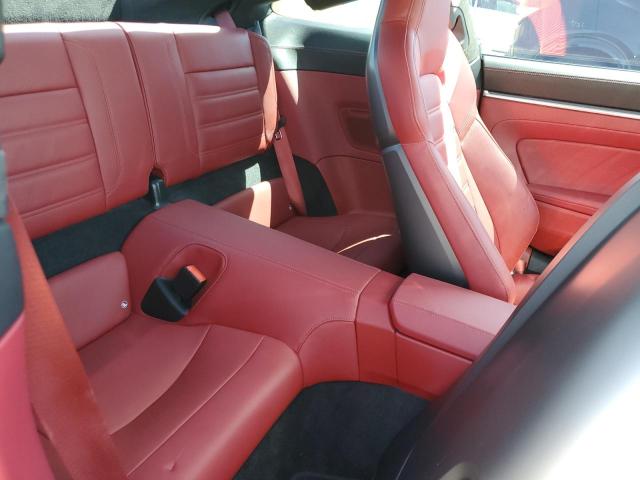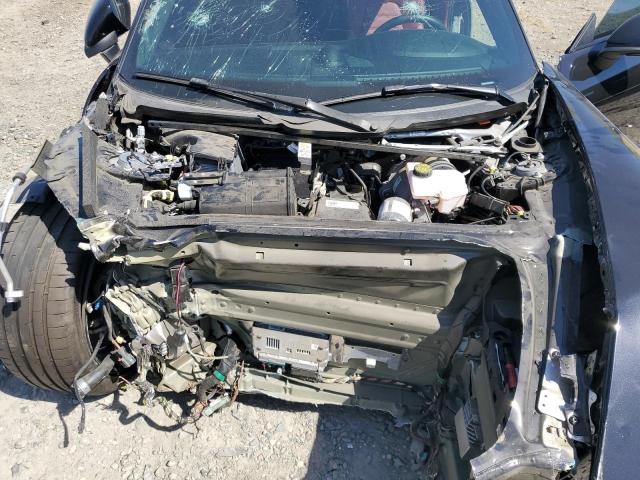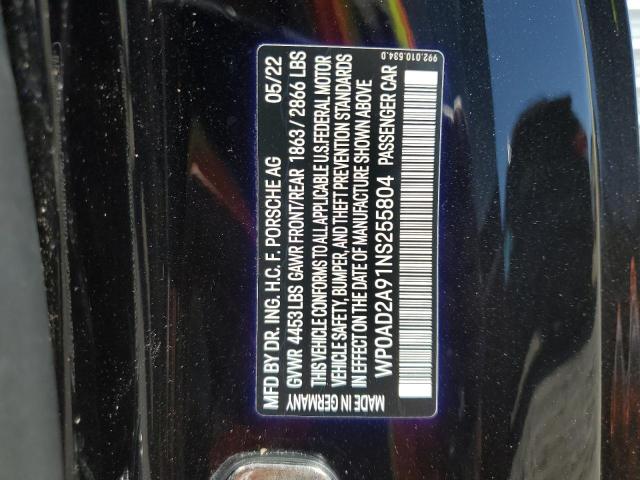2022 PORSCHE 911 | WP0AD2A91NS255804
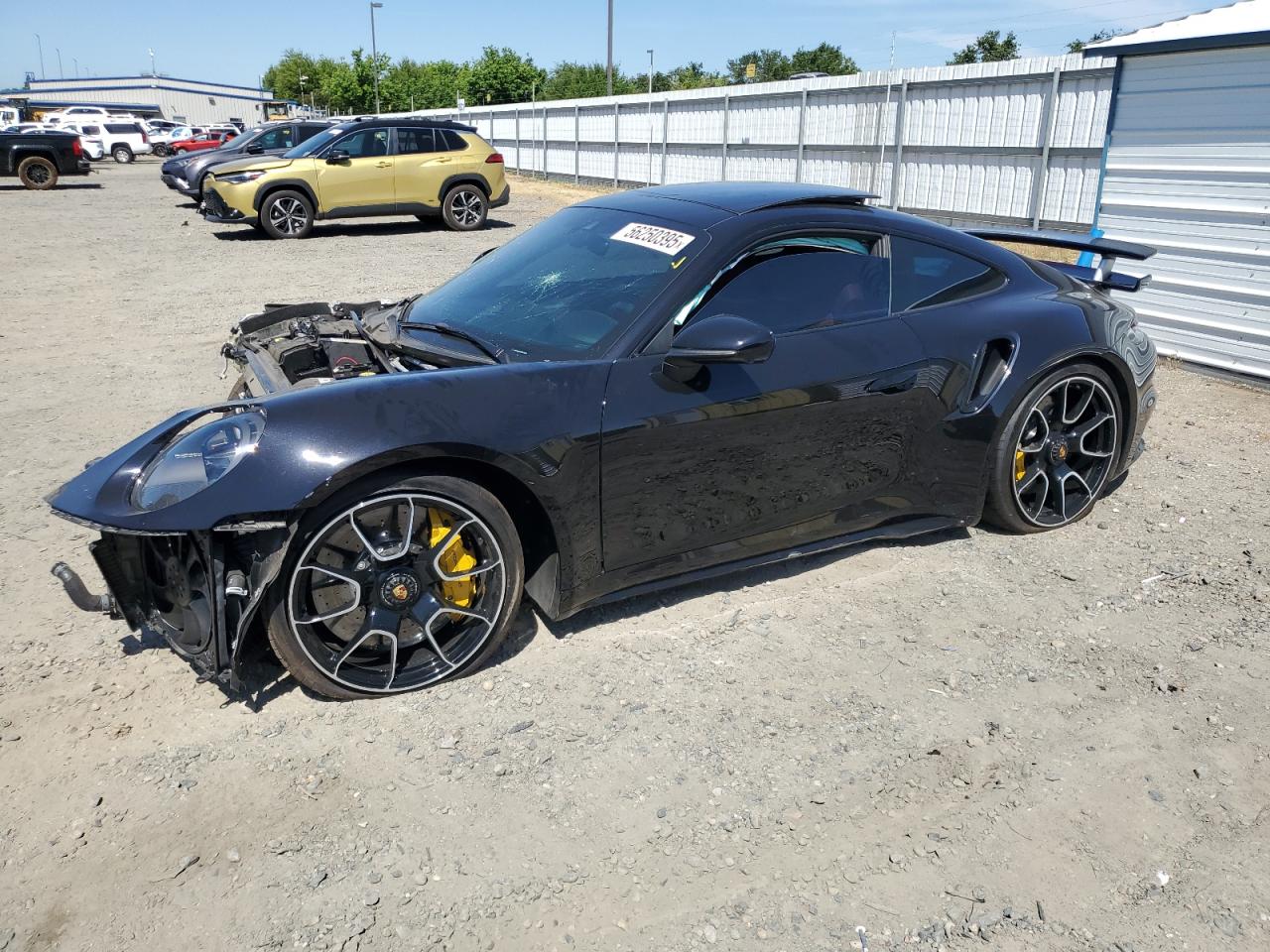 ❯
❯
Specifications
9
~$204,000
Engine: 3.8L twin-turbo flat-6
Torque: 800 Nm
0–100 km/h: ~2.7 s
The 992-generation Porsche 911 Turbo S epitomizes the pinnacle of performance engineering, blending everyday usability with supercar-level speed. Its 3.8-liter twin-turbocharged flat-six engine delivers an astounding 650 horsepower and 800 Nm of torque, propelling the car from 0 to 100 km/h in a mere 2.7 seconds.
Beyond straight-line acceleration, the Turbo S showcases exceptional handling dynamics. The advanced all-wheel-drive system, rear-axle steering, and adaptive aerodynamics work in harmony to provide unparalleled stability and agility. The 8-speed PDK transmission ensures seamless gear changes, keeping the engine in its optimal power band.
Inside, the Turbo S offers a luxurious yet driver-focused cabin, equipped with the latest technology and comfort features. Despite its performance capabilities, it remains practical for daily use, embodying the essence of a true grand tourer.
In essence, the 911 Turbo S is not just a high-performance sports car; it's a testament to Porsche's commitment to engineering excellence, delivering an exhilarating driving experience without compromising on comfort or practicality.
Body Styles
Coupe & Cabriolet & Targa
Model Name Meaning (Manufacturer)
The name "911" was adopted in 1964 after Peugeot objected to Porsche’s original “901” designation (claiming exclusive rights to three-digit numbers with a zero in the middle). Since then, 911 has come to define not just a model, but an entire sports car philosophy — emphasizing precision, rear-engine balance, and evolutionary design. The 992 generation continues this legacy with improved chassis rigidity, active aero, and an almost digital cockpit, all while maintaining the classic silhouette that’s instantly recognizable.
Model Name Meaning (Languages)
"911" is a universal badge — consistent across languages, cultures, and decades. It requires no translation and holds equal weight in Europe, North America, Asia, and the Middle East. It evokes motorsport pedigree, precision engineering, and brand purity, becoming synonymous with Porsche itself. Whether you say “nine-eleven” in English or “neun-elf” in German, it resonates the same.
Body & Interior Colors and Rims
The 992 generation expands Porsche’s iconic paint selection with heritage and modern tones: Agate Grey, Dolomite Silver, Carmine Red, Gentian Blue, Python Green, and Chalk. Paint to Sample (PTS) unlocks hundreds of custom options like Rubystone Red or Gulf Blue. Higher trims (GT3, Turbo S) offer carbon fiber aero packages and exclusive wheel colors.
Interior themes span from classic Black and Bordeaux Red leather to special trims like Crayon with Chalk stitching or Slate Grey with Lizard Green seatbelts. Materials include leather, Race-Tex (synthetic suede), carbon fiber, aluminum, and open-pore wood. GT models feature optional bucket seats, yellow center markers, and track-spec roll cages. The center touchscreen (10.9”) is integrated with Porsche Communication Management (PCM), and a 5-dial digital-analog cluster still pays homage to the original 911 layout.
Wheel options range from 19”/20” staggered setups on base trims to 21” center-locks on GT3s and Turbo S. Carbon-ceramic brakes, nose-lift systems, and lightweight forged wheels are available across the board.
Top Expensive Options
- Porsche Ceramic Composite Brakes (PCCB) – $9,210
- Front Axle Lift System – $2,770
- Full Bucket Seats (GT models) – $5,900
- Burmeister 3D High-End Audio System – $5,560
- Chrono Package with Drive Mode Selector – $2,090
- SportDesign Front and Rear Fascia Package – $4,500
- Carbon Fiber Roof (GT3 Touring) – $3,980
- Rear-Axle Steering – $2,090
- Paint to Sample (PTS) – $12,830
- Weissach Package (GT3 RS) – $30,000+
vs Competitors
The 992-generation 911 competes with the Aston Martin Vantage, Audi R8, BMW M8, and Mercedes-AMG GT, but its real rival remains the Porsche 911 of yesterday. The 992 Turbo S outpaces supercars like the McLaren Artura and Ferrari Roma in real-world use, while the GT3 and GT3 RS take aim directly at track legends like the Chevy Corvette Z06, McLaren 765LT, and Ferrari 296 GTB. No competitor matches the 911’s blend of performance, usability, and heritage — it's a genre-defining machine that evolves without compromise.
Fun Fact
The 911 GT3 RS (2023) features active aero, swan-neck rear wing, and Formula 1-inspired front dampers, generating up to 860 kg of downforce — more than any road-going Porsche in history. Despite its extreme spec, it’s still legal to drive to the grocery store. That’s Porsche.
Lot Details
-
Sale Date15/May/2025
-
Lot Number56250395
-
Sale document
-
Location
-
Odometer5,193 miles (8,357 km)
-
Primary Damage:DAMAGE HISTORY
-
Secondary DamageFRONT END
-
Fuel
-
Engine Type3.7L 6
-
Transmission
-
Drive Type
-
Color
Final Bid Porsche 911 (2022)
$44,250
$102,865
$173,000
Specifications
9
~$204,000
Torque:
0–100 km/h:
The 992-generation Porsche 911 Turbo S epitomizes the pinnacle of performance engineering, blending everyday usability with supercar-level speed. Its 3.8-liter twin-turbocharged flat-six engine delivers an astounding 650 horsepower and 800 Nm of torque, propelling the car from 0 to 100 km/h in a mere 2.7 seconds.
Beyond straight-line acceleration, the Turbo S showcases exceptional handling dynamics. The advanced all-wheel-drive system, rear-axle steering, and adaptive aerodynamics work in harmony to provide unparalleled stability and agility. The 8-speed PDK transmission ensures seamless gear changes, keeping the engine in its optimal power band.
Inside, the Turbo S offers a luxurious yet driver-focused cabin, equipped with the latest technology and comfort features. Despite its performance capabilities, it remains practical for daily use, embodying the essence of a true grand tourer.
In essence, the 911 Turbo S is not just a high-performance sports car; it's a testament to Porsche's commitment to engineering excellence, delivering an exhilarating driving experience without compromising on comfort or practicality.
Body Styles
Coupe & Cabriolet & Targa
Model Name Meaning (Manufacturer)
The name "911" was adopted in 1964 after Peugeot objected to Porsche’s original “901” designation (claiming exclusive rights to three-digit numbers with a zero in the middle). Since then, 911 has come to define not just a model, but an entire sports car philosophy — emphasizing precision, rear-engine balance, and evolutionary design. The 992 generation continues this legacy with improved chassis rigidity, active aero, and an almost digital cockpit, all while maintaining the classic silhouette that’s instantly recognizable.
Model Name Meaning (Languages)
"911" is a universal badge — consistent across languages, cultures, and decades. It requires no translation and holds equal weight in Europe, North America, Asia, and the Middle East. It evokes motorsport pedigree, precision engineering, and brand purity, becoming synonymous with Porsche itself. Whether you say “nine-eleven” in English or “neun-elf” in German, it resonates the same.
Body & Interior Colors and Rims
The 992 generation expands Porsche’s iconic paint selection with heritage and modern tones: Agate Grey, Dolomite Silver, Carmine Red, Gentian Blue, Python Green, and Chalk. Paint to Sample (PTS) unlocks hundreds of custom options like Rubystone Red or Gulf Blue. Higher trims (GT3, Turbo S) offer carbon fiber aero packages and exclusive wheel colors.
Interior themes span from classic Black and Bordeaux Red leather to special trims like Crayon with Chalk stitching or Slate Grey with Lizard Green seatbelts. Materials include leather, Race-Tex (synthetic suede), carbon fiber, aluminum, and open-pore wood. GT models feature optional bucket seats, yellow center markers, and track-spec roll cages. The center touchscreen (10.9”) is integrated with Porsche Communication Management (PCM), and a 5-dial digital-analog cluster still pays homage to the original 911 layout.
Wheel options range from 19”/20” staggered setups on base trims to 21” center-locks on GT3s and Turbo S. Carbon-ceramic brakes, nose-lift systems, and lightweight forged wheels are available across the board.
Top Expensive Options
- Porsche Ceramic Composite Brakes (PCCB) – $9,210
- Front Axle Lift System – $2,770
- Full Bucket Seats (GT models) – $5,900
- Burmeister 3D High-End Audio System – $5,560
- Chrono Package with Drive Mode Selector – $2,090
- SportDesign Front and Rear Fascia Package – $4,500
- Carbon Fiber Roof (GT3 Touring) – $3,980
- Rear-Axle Steering – $2,090
- Paint to Sample (PTS) – $12,830
- Weissach Package (GT3 RS) – $30,000+
vs Competitors
The 992-generation 911 competes with the Aston Martin Vantage, Audi R8, BMW M8, and Mercedes-AMG GT, but its real rival remains the Porsche 911 of yesterday. The 992 Turbo S outpaces supercars like the McLaren Artura and Ferrari Roma in real-world use, while the GT3 and GT3 RS take aim directly at track legends like the Chevy Corvette Z06, McLaren 765LT, and Ferrari 296 GTB. No competitor matches the 911’s blend of performance, usability, and heritage — it's a genre-defining machine that evolves without compromise.
Fun Fact
The 911 GT3 RS (2023) features active aero, swan-neck rear wing, and Formula 1-inspired front dampers, generating up to 860 kg of downforce — more than any road-going Porsche in history. Despite its extreme spec, it’s still legal to drive to the grocery store. That’s Porsche.

